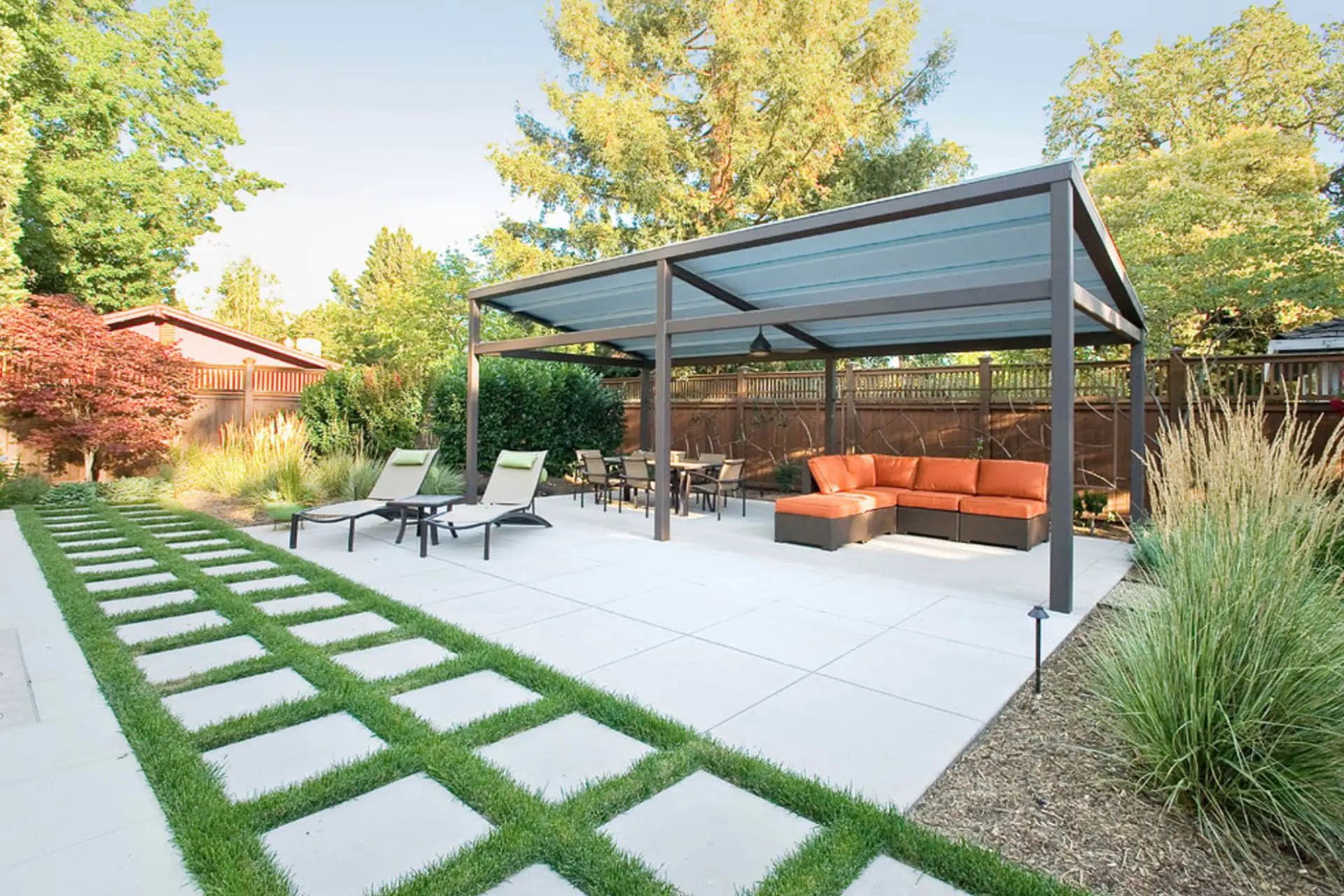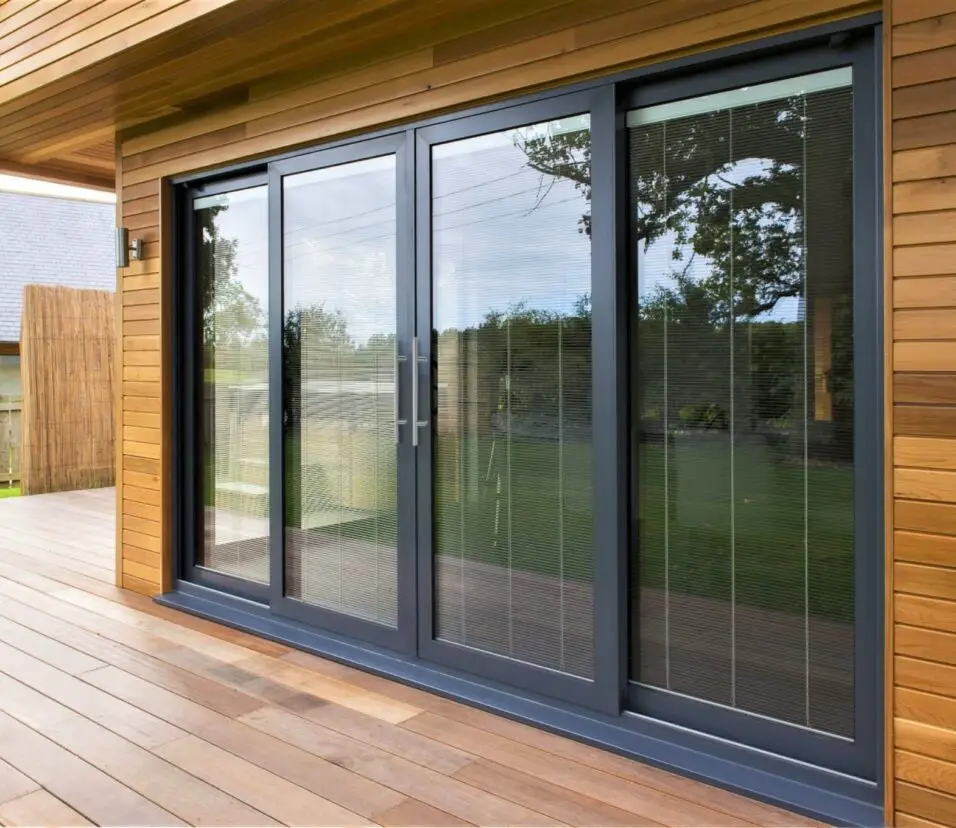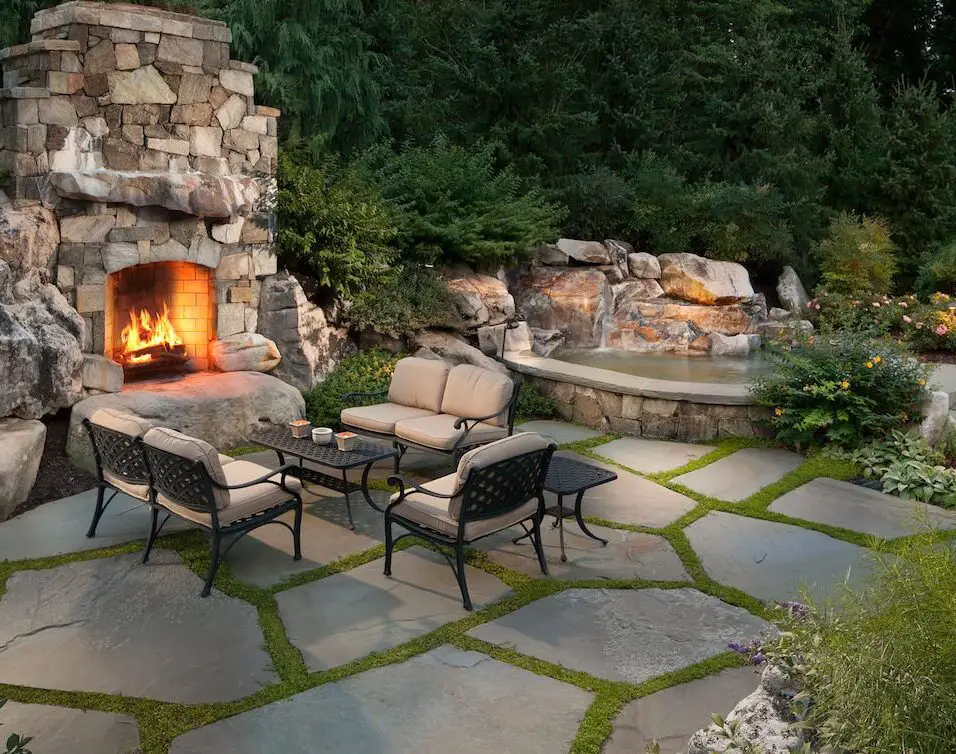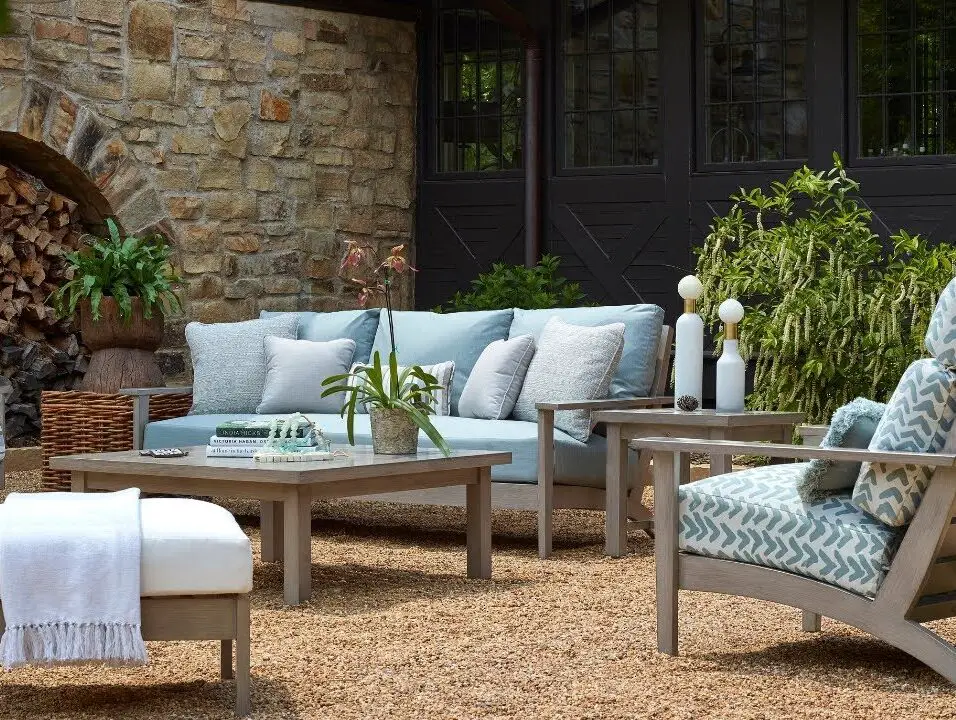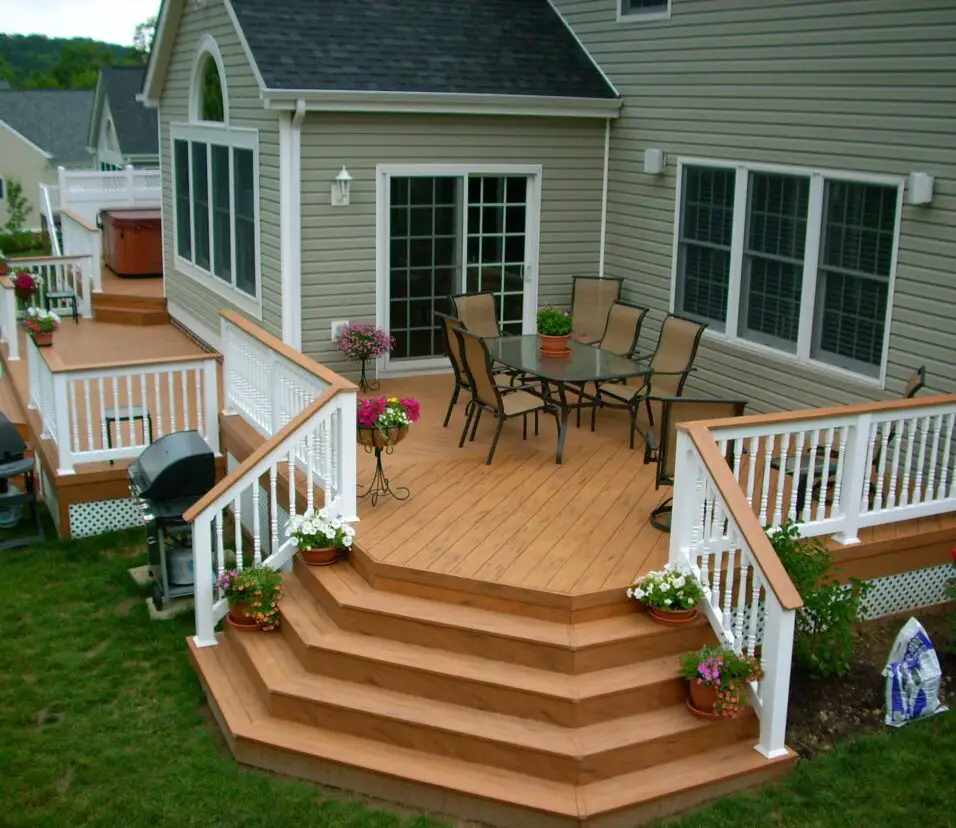How To Enclose A Covered Patio
Introduction
How To Enclose A Covered Patio: Whether you want to create a cozy outdoor living space or protect your patio from the elements, enclosing your patio can be a great investment. It allows you to enjoy your patio year-round and adds value to your home. However, the process of enclosing a covered patio can be overwhelming if you don’t know where to start. In this article, we will guide you through the steps to enclose your patio and create the perfect outdoor retreat.
Before you begin the process of enclosing your covered patio, it’s important to assess your needs and goals. Consider how you plan to use the enclosed space. Do you want to create a Understanding your needs will help you determine the type of enclosure block wind that will best suit your requirements. Additionally, consider your budget and timeline for the project. This will help you make informed decisions throughout the process.
Once you have a clear understanding of your needs and goals, it’s time to choose the right enclosure for your patio. There are several options available, including screened enclosures, glass enclosures, and retractable enclosures. Each type has its own advantages and considerations. For example, a screened enclosure is a cost-effective option that allows you to enjoy fresh air while keeping bugs out. On the other hand, a glass enclosure provides better insulation and protection from the elements. Consider the climate in your area and your desired level of privacy to make the best choice.

What is the cheapest way to enclose a covered patio?
When it comes to enclosing a covered patio, there are several options available, each with its own advantages and disadvantages. However, if you are looking for the cheapest way to enclose your patio, there are a few options that you can consider.
1. Use outdoor curtains: One of the most affordable ways to enclose a covered patio is by using outdoor curtains. These curtains are made from weather-resistant materials and can be easily hung from a rod or wire. They provide privacy and protection from the elements, while still allowing you to enjoy the outdoor view. Outdoor curtains come in a variety of colors and styles, allowing you to choose the one that best suits your patio’s aesthetic.
2. Install vinyl or fabric panels: Another cost-effective option is to install vinyl or fabric panels. These panels can be attached to the existing structure of your patio using hooks or Velcro. Vinyl panels are durable and easy to clean, while fabric panels offer a softer and more elegant look. Both options provide protection from wind, rain, and insects, making your patio more comfortable and usable throughout the year.
3. Build a DIY screen enclosure: If you are handy with tools and have some DIY skills, you can consider building a screen enclosure for your patio. This option requires more effort and time, but it can be a budget-friendly solution. You can purchase screen material and framing supplies from a local home improvement store and follow online tutorials or guides to build the enclosure yourself. This way, you can customize the size and design of the enclosure to fit your patio perfectly.
What is the cheapest way to enclose an outdoor area?
Enclosing an outdoor area can provide numerous benefits, such as creating a private space, protecting against the elements, and adding value to your property. However, the cost of enclosing an outdoor area can vary greatly depending on the materials and methods used. If you’re looking for the cheapest way to enclose an outdoor area, there are several options to consider.
One of the most affordable ways to enclose an outdoor area is by using screening materials. Screens made of materials like mesh or vinyl can be attached to existing structures, such as fences or pergolas, to create a barrier that keeps out insects and provides some privacy. These materials are relatively inexpensive and can be easily installed by homeowners with basic DIY skills.
Another cost-effective option for enclosing an outdoor area is to use tarpaulins or tarps. These waterproof and durable materials can be stretched across a frame or attached to existing structures to create a temporary enclosure. While not as aesthetically pleasing as other options, tarps can be an affordable solution for enclosing a space on a budget.
If you’re looking for a more permanent and visually appealing option, you may consider using plastic sheeting or PVC panels. These materials are relatively inexpensive and can be easily cut and installed to fit the desired space. Plastic sheeting or PVC panels can provide protection against the elements while still allowing natural light to enter the enclosed area.
For those who are willing to invest a bit more, prefabricated enclosures can be a cost-effective option. These enclosures are typically made of materials like aluminum or vinyl and come in a variety of styles and sizes. While they may require professional installation, prefabricated enclosures offer a more durable and aesthetically pleasing solution for enclosing an outdoor area.
How do you enclose a covered patio for winter?
Enclosing a covered patio for winter is a great way to extend the use of your outdoor space during the colder months. It provides a cozy and protected area where you can still enjoy the outdoors without being exposed to the elements. There are several methods you can use to enclose a covered patio for winter, depending on your budget, preferences, and the level of insulation you desire.
One option is to install clear vinyl panels or curtains around the perimeter of the patio. These panels are typically made of heavy-duty vinyl and can be attached to the existing structure using hooks, snaps, or Velcro. They provide a barrier against wind, rain, and snow while still allowing you to see outside. This option is relatively affordable and easy to install, making it a popular choice for many homeowners.
Another option is to use insulated panels or walls to enclose the patio. These panels are typically made of foam insulation sandwiched between two layers of plywood or other durable materials. They provide a higher level of insulation and can help keep the space warmer during the winter months. However, this option is more expensive and may require professional installation.
If you’re looking for a more temporary solution, you can use outdoor curtains or shades to enclose the patio. These curtains or shades can be hung from a rod or wire and can be easily opened or closed as needed. They provide some protection against wind and cold temperatures, but may not offer as much insulation as other methods. This option is often used for more casual or temporary enclosures.
What is the cheapest way to enclose a patio for winter?
Homeowners generally prioritize cost when insulating a patio for winter. Fortunately, there are various affordable ways to create a nice and comfortable space for the winter. There are several aspects to consider when picking the most cheap solution to keep out chilly air or safeguard your patio furniture.
Plastic sheets or tarps are economical solutions to winterize a patio. These materials are affordable and may be affixed to your patio construction with bungee cords or zip ties. Wind and rain are blocked by plastic sheeting or tarps, protecting your patio. These materials may not insulate as well as others, so you may need to add heating sources.
Clear vinyl drapes are another inexpensive patio enclosure. Heavy-duty vinyl curtains can be installed with curtain tracks or hooks. Clear vinyl curtains let you see your outdoor environment while blocking wind, rain, and snow. They also provide better insulation than plastic sheets or tarps, keeping your patio warmer in winter.
How can I enclose my porch cheaply?
Enclosing a porch can be a great way to add extra living space to your home. It can provide a cozy area to relax, entertain guests, or simply enjoy the outdoors while being protected from the elements. However, the cost of enclosing a porch can sometimes be a deterrent for homeowners. Fortunately, there are several affordable options available to enclose your porch without breaking the bank.
One cost-effective option is to use clear vinyl sheeting or plastic curtains to enclose your porch. This material is relatively inexpensive and can be easily installed using curtain rods or hooks. Clear vinyl sheeting allows you to enjoy the view and natural light while still providing protection from wind, rain, and insects. It is also easy to clean and maintain, making it a practical choice for enclosing your porch on a budget.
These weatherproof canvas or polyester curtains can be hung from curtain rods or hooks. Porch cloth curtains give elegance and privacy while protecting from the elements. They come in several colors and patterns to personalise your enclosed porch.
For a permanent solution, try screen panels or mesh screens. These can be fitted to your porch framework to keep out insects and let air in. Screen panels, made of aluminum or fiberglass, can be screwed or clipped in place. Screen panels are a robust and long-lasting porch enclosure option, but they cost more upfront.
What materials are commonly used to enclose a covered patio?
When it comes to covering a patio, there are a few popular materials that look good and do the job. Glass is a popular choice because it looks sleek and modern and lets in a lot of natural light. Depending on the style you want, glass containers can have frames or not. Aluminum is another common material that is known for being long-lasting and easy to keep up. Enclosures made of aluminum can be made to fit any outdoor size and come in a variety of colors to match the outside.
For those who want a more traditional or country look, wood is another material that is often used to surround a covered patio. Fences made of wood can be made from different kinds of wood, like cedar or oak, which don’t naturally rot or decay. Vinyl is also a popular choice because it is cheap and can be used in many ways. Enclosures made of vinyl can be made to look like wood or more modern styles. Also, they don’t fade, crack, or bend easily, so they are a low-maintenance choice.
Are there any specific building codes or regulations to consider when enclosing a covered patio?
When enclosing a covered patio, it is important to be aware of any specific building codes or regulations that may apply to your area. These codes and regulations are put in place to ensure the safety and structural integrity of the enclosed space. Failure to comply with these requirements can result in fines or even the need to remove the enclosure.
One common regulation to consider is the need for a building permit. Many jurisdictions require a permit for any structural modifications or additions to a property, including enclosing a patio. This permit ensures that the enclosure meets the necessary safety standards and is built to code.
In addition to permits, there may be specific regulations regarding the size and height of the enclosure, as well as requirements for electrical wiring and insulation. It is important to consult with your local building department or a professional contractor to determine the specific codes and regulations that apply to your project.
How can I ensure proper insulation and weatherproofing when enclosing a covered patio?
When enclosing a covered porch to keep it warm and dry, it’s important to use the right insulation and weatherproofing materials. Picking the right materials for the cover is an important step. For good insulation and to help keep the temperature inside a place stable, insulated panels made of foam or fiberglass are a good choice. For the outdoor enclosure, these panels can be put up on the roof, the walls, or even the floor.
Along with insulated walls, any holes or cracks in the enclosure should be sealed to stop air and water from leaking out. You can use weatherstripping, glue, or sealant to do this. Pay extra attention to places like windows and doors where the enclosure meets the current structure.
Ventilation is another important part of making sure that insulation and weatherproofing work right. Even though it might not make sense, ventilation is needed to keep the area from getting too damp and condensation from forming. This can be done by putting in vents or fans that move the air around. Additionally, you might want to add sealed windows that can be opened for fresh air when needed.
Are there any additional features or considerations to keep in mind when enclosing a covered patio, such as lighting or ventilation?
It is important to think about extra features and things like lighting and air when enclosing a covered patio. These things can make your enclosed area much more useful and comfortable.
When enclosing a covered porch, lighting is an important thing to think about. If you use the right lighting, you can make the space feel warm and pleasant, so you can enjoy it even after the sun goes down. You can pick from different types of lights, such as ceiling lights, wall sconces, and even string lights. If you want to use outdoor lighting, you should choose fixtures that can handle a variety of weather situations.
When creating a covered patio, ventilation is another important thing to think about. Without enough air flow, the enclosed area can get stuffy and uncomfortable, especially when it’s hot outside. You can make sure there is enough ventilation in a number of ways, such as by adding ceiling fans or windows that can be opened to let fresh air flow. You could also use materials that let air move, like mesh screens or louvered panels, that are breathable.
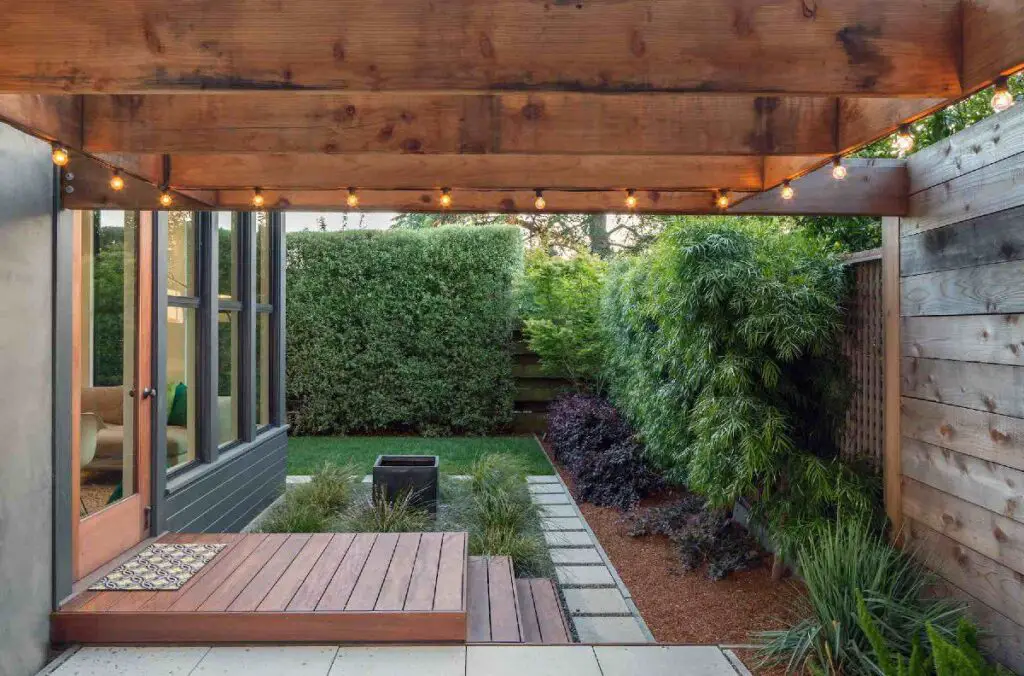
Conclusion
Enclosing a covered patio can be a great way to create an additional living space in your home. Whether you want to use it as a sunroom, a playroom for your kids, or simply a cozy spot to relax and enjoy the outdoors, enclosing your patio can provide you with a versatile and functional space that can be enjoyed year-round.
There are several options available when it comes to porch enclose a covered patio. One popular option is to install glass or screen panels around the perimeter of the patio. This allows you to enjoy the views and natural light while still being protected from the elements. Another option is to use retractable screens or curtains that can be opened or closed as needed. This provides you with the flexibility to have an open-air patio when the weather is nice, and a closed-off space when it’s too hot, cold, or rainy.
Enclosing a covered patio can also help to increase the value of your home. By adding an additional living space, you are essentially increasing the square footage of your home, which can be a major selling point for potential buyers. Additionally, an enclosed patio can provide a unique and desirable feature that sets your home apart from others on the market.



